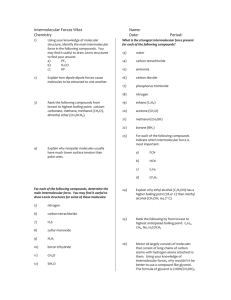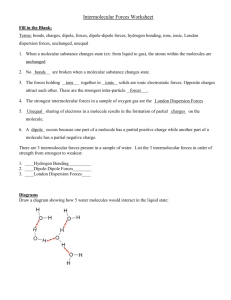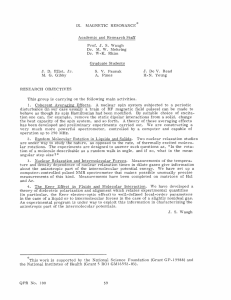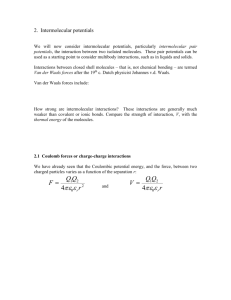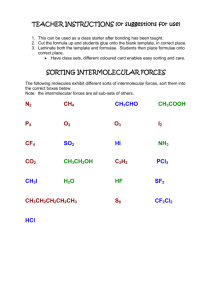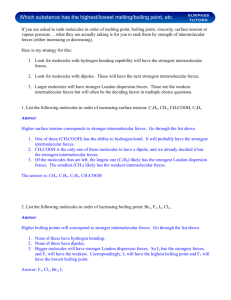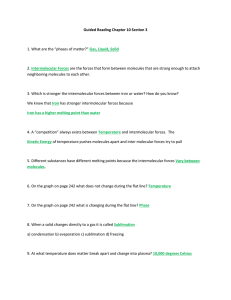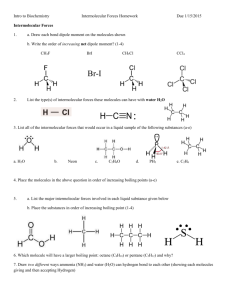Intermolecular Forces ws - SCH3U-CCVI
advertisement
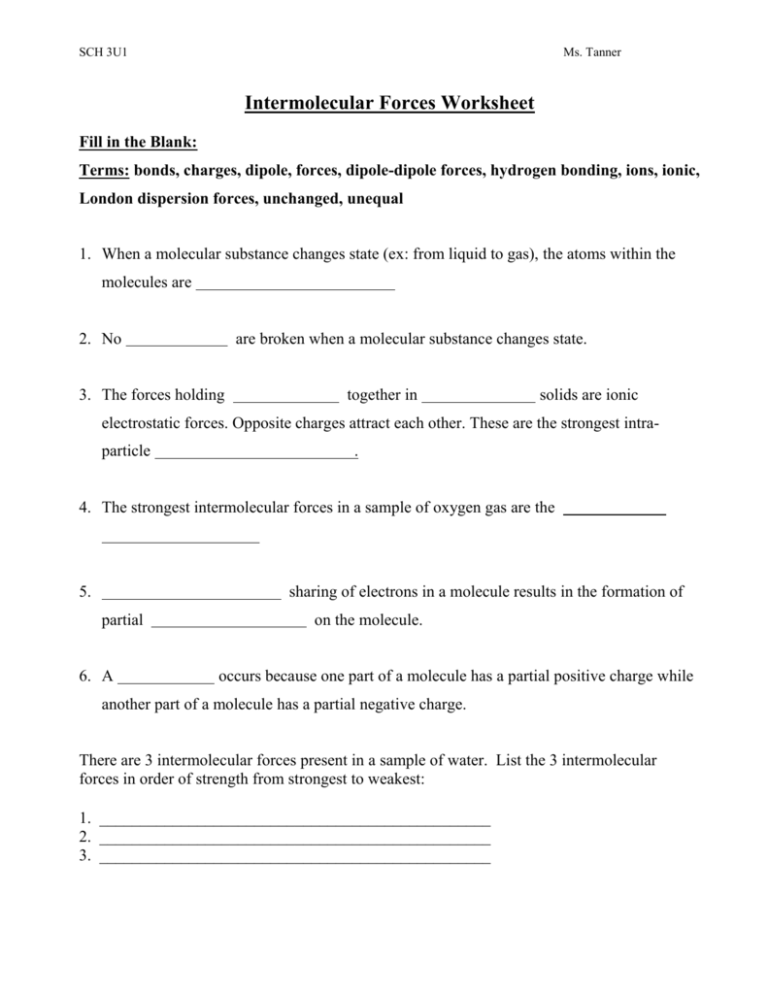
SCH 3U1 Ms. Tanner Intermolecular Forces Worksheet Fill in the Blank: Terms: bonds, charges, dipole, forces, dipole-dipole forces, hydrogen bonding, ions, ionic, London dispersion forces, unchanged, unequal 1. When a molecular substance changes state (ex: from liquid to gas), the atoms within the molecules are 2. No are broken when a molecular substance changes state. 3. The forces holding together in solids are ionic electrostatic forces. Opposite charges attract each other. These are the strongest intraparticle . 4. The strongest intermolecular forces in a sample of oxygen gas are the 5. sharing of electrons in a molecule results in the formation of partial 6. A on the molecule. occurs because one part of a molecule has a partial positive charge while another part of a molecule has a partial negative charge. There are 3 intermolecular forces present in a sample of water. List the 3 intermolecular forces in order of strength from strongest to weakest: 1. ________________________________________________ 2. ________________________________________________ 3. ________________________________________________ SCH 3U1 Ms. Tanner Diagrams Draw a diagram showing how 5 water molecules would interact in the liquid state: Draw a diagram showing how water molecules would interact in the gas state: Explain, using intermolecular forces, what has happened when the sample of water has changed from a liquid to a gas. SCH 3U1 Ms. Tanner Written Response: Methane (CH4) and water have the similar molecular masses. Why is methane a gas at room temperature while water is a liquid at room temperature? Explain, using bonding and intermolecular forces, the difference between these two molecules. Find the boiling points of H2O and H2S in the Chemistry reference books. Explain the difference in boiling points using intermolecular forces. Be sure to draw out the shapes of the molecules and look at the polarity of the bonds.


